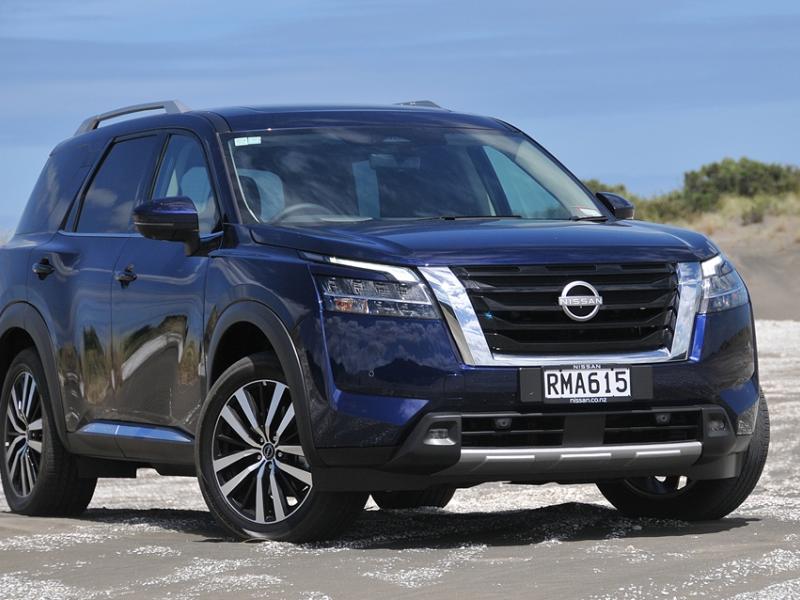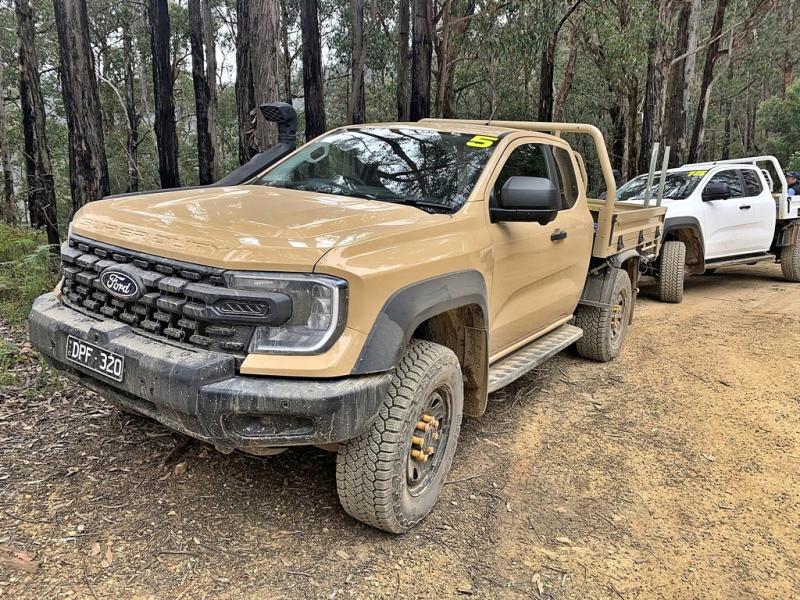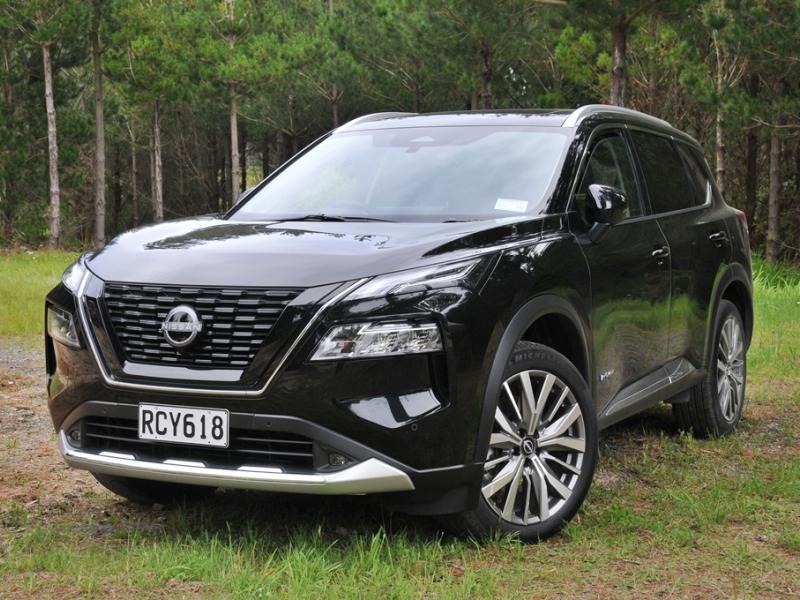Ford could well be onto another winner with its all-new Trophy Truck-style Ranger Raptor. NZ4WD’s Damien O’Carroll explains why.
Back in 1993 Ford introduced a model into its venerable F-150 line that would change the way people looked at the big ol’ truck.
It was the SVT Lightning, a powered-up road-focussed version of the F-150 that was all about straight line speed and, yes, good handling. By American truck standards, that is.
The Lightning was dropped in 1995, but came back again in the 1999 model year with even more power (thanks to a supercharger bolted to its 5.4-litre petrol V8) and cemented the legend of the fast Ford road truck.
The Lightning was again dropped from the line up when the new F-150 appeared in 2004, but Ford was determined to do another performance F-150. However, it wouldn’t be what anyone expected.
Way to go!
That is where a bloke called Jamal Hameedi comes into the picture. Hameedi was the chief engineer at SVT (Special Vehicle Team) when it came time to think about a replacement for the Lightning in the new F-150 line up. But instead of a road-going hot F-150, Hameedi was convinced an off-roader was the way to go.
Hameedi had a passion for off-road racing. American off-road racing, that is - you know, where huge pick ups fly across deserts spending more time in the air than on the ground? Yeah, that’s it. So he turned to that for inspiration.
During his time working with a Ford-sponsored SCORE Trophy Truck team as a race engineer he was responsible for developing the 5.4-litre Triton V8 that won three Baja 1000 titles, so he did know a bit about it.
All of this led Hameedi to develop the idea of the F-150 Raptor, a pure off-road racing version of the standard truck, something built to hammer across sand dunes, rather than simply go fast on the road. Or sit in front of a cafe somewhere.
Following the success of the powered-up Lightning, Ford management was understandably reluctant to go in a totally different direction.
“The Lightning was a straight line, on-road handling focussed pick up truck, and when we first said we were going to do Raptor - an off-road performance pick up truck - everyone said ‘Hell no, we’re not going to do that. That’s the worst idea ever!” Hameedi laughs when asked about it.
Proved right
But he was proved to be very right indeed, as the F-150 Raptor has gone on to be a massive success and a much-loved model in Ford’s truck line up, despite doing what is essentially a mortal sin in the world of American trucks - moving from a big V8 to a (more powerful) turbocharged V6.
But then the Raptor has never been about power, like the Lightning was, and it has only ever had relatively modest power increases over the standard F-150 in all of its guises.
Nope, what the Raptor has always been about is the suspension, at least it is according to the man who created it.
“If you think that a Raptor is all about power, then you are completely missing the point,” said Hameedi.
“If you’re focussed on the power and talking about the engine, then you don’t get the Raptor. The Raptor is all about the most advanced suspension, chassis and design. You spend every single penny you have on the chassis.”
NZ’s best-seller
Which is exactly what Hameedi did with the F-150 Raptor. And now it is our turn, as Hameedi and his Ford Performance team have now turned their attention to New Zealand’s best-selling vehicle (yeah, that’s not a typo - the Ranger sells more than any other passenger vehicle in New Zealand, including the venerable Toyota Corolla).
We talked to Hameedi and some of his Ford Performance team at the reveal of the Ford Ranger Raptor in Bangkok, Thailand, recently. But more importantly, we got our first look at the beast itself at the lavish and full-flight event. Yeah, it flew…
“The F-150 isn’t available around the world, so there were a lot of customers missing out on a Raptor,” Hameedi said.
“The Raptor experience was only in America and the Middle East, so now we’ve got a solution for the rest of the world.
Diesel ‘n dust
“We knew we wanted a diesel engine for Asia and other markets, and this was the best diesel we could find.”
The particular diesel engine that Hameedi is referring to is also the source of anxiety to some. Why? Because of its size…
Hopes were (misguidedly) high for a turbo V6 in the Ranger Raptor, but instead Ford went with a hi-tech new bi-turbo 2.0-litre four-cylinder diesel engine that produces 157kW of power and 500Nm of torque.
Not a massive increase over the standard Ranger’s 147kW/470Nm 3.2-litre inline five-cylinder turbo diesel, but then the F-150 Raptor never got massive increases over the standard truck either.
Ford aren’t talking about exactly where that power and torque feature in the rev range just yet, but rest assured that the Raptor will equipped to make the most of it wherever it lurks thanks to one of the features that makes it across from the F-150 Raptor- Ford’s all-new ten-speed automatic transmission.
Longer, wider, taller
The Raptor is larger than a standard Ranger in every dimension, with an increase in length of 39mm and height of 58mm, but the biggest increase in in the Raptor’s width, which is a whopping 331mm wider than the standard Ranger (the Raptor is 2,180mm wide), due to the massively increased track, which is now 1710mm.
The front and rear guards are made from composite materials to allow for the massive increase in track and the suspension travel, but are also more resistant to dents. Handy in an off-road situation.
Of course, ground clearance is also up to 283mm, while the approach angle of 32.5 degrees, ramp over angle of 24 degrees, and departure angle of 24 degrees are also improved over the standard ute.
Coils all round
Ford has also seriously upgraded and reinforced the Ranger’s chassis for the Raptor, and incorporates new geometry for the larger suspension to allow for greater wheel travel, while the Raptor ditches the Ranger’s leaf spring set up for a bespoke version of the Everest SUV’s coilover rear suspension with an integrated Watt’s linkage (and, yes, Ford engineers will privately admit to an Everest Raptor being a possibility…).
The Ranger Raptor will launch in New Zealand in the latter half of this year, but no price has been finalised yet. Expect it to easily exceed the Wildtrak’s $64,640, most likely by quite a bit too.
Yes, it will be expensive, but there will literally be nothing like it you can buy straight off the showroom floor either. We can’t wait.
Ends
SIDEBAR
HEADER: Game changer
CAPTIONS:
Pic 1: Engineer Jamal Hameedi with ‘his’ Ford Ranger Raptor
Pic 2: Ladder chassis on display at Thailand launch
STORY:
When you ask Ford Performance Chief Engineer Jamal Hameedi what his favourite part of the new Ford Ranger Raptor is, he smiles broadly and says “I have a crush on the rear suspension!”
“It’s the first multi-link coilover on a pick up truck that is a Watts link(age) and it is a game changer from a ride and handling standpoint. It’s the best handling pick up truck I have ever driven, by far. And I’ve driven a LOT of pick up trucks. This thing is amazing.”
The Raptor’s rear suspension is a development of the coilover set up introduced on the Everest SUV, while Ford has also extensively modified the Ranger’s chassis for use under the Raptor.
New chassis & geometry
The frame design incorporates new geometry for the large suspension that provides increased track and wheel travel, and consists of various grades of high-strength low-alloy (HSLA) steel. The stiffened side-rails are made from increased HSLA grade steel to absorb off-road high speed impacts and there is also extra underbody protection in the form of a new bash plate made from 2.3mm thick high-strength steel.
The front accommodates strengthened protruding shock absorber towers, and two recovery hooks rated at 4.5 tonnes can be found at the front, with two 3.8 tonne capable hooks at the rear. Ford engineers at the launch confidently said the only time you will need them is to recover someone else.
Lager ventilated disc brakes all round handle the stopping, while towing capacity has dropped from the standard Ranger’s 3,500kg down to 2,500kg with the Raptor’s focus on off-road speed and massive suspension travel.
Speaking of that sort of thing, these are part of the Raptor’s DNA thanks to the shock absorbers it inherits from the F-150 Raptor.
Fox Shocks
Built specially for the Raptor by Fox Racing Shox, the dampers feature 46.6mm pistons front and rear, as well as “Position Sensitive Damping” to provide higher damping forces at full jounce and rebound, which Ford says enables better off-road capabilities, and lower damping forces in the mid-travel zone for a class leading plush ride during on-road trips
“Those shocks are incredibly expensive - they’re full-on racing shocks. Four of them literally cost as much as a four-cylinder engine,” says Hameedi.
And with that great expense comes some fairly remarkable ride and handling characteristics, according to everyone we spoke to who has driven it.
“The standout experience of the Ranger Raptor, hands down, is how far you can push it off-road versus any other available production road vehicle in our markets, and still ride like a millionaire on-road,” says Damien Ross the chief program engineer for the Ranger Raptor.
New ‘Baja’ mode
But it is not all just serious mechanical ability, because the Raptor also gets a Terrain Management System that features six modes which can be selected via a dedicated switch on the steering wheel.
On road there is the expected Normal and Sport modes, while off-road modes include Grass/Gravel/Snow mode, Mud/Sand mode, Rock mode and the new Baja mode that reduces traction control intervention and offers faster gear shifts at higher engine speeds, holds gears longer and downshifts more
To read every story in the April 2018 issue of NZ4WD go to Zinio.com (March 16) or purchase your own hard copy at the Adrenalin store






